[Americana] [Declaration of Independence] Hancock, John Letter, signed John Hancock proclaims the adoption of the Declaration of Independence “Congress have judged it necessary to dissolve all Connection between Great Britain, and the American Colonies; and to declare them free and independent States… The important Consequences to the American States from this Declaration of Independence, considered as the Ground and Foundation of a future Government, will naturally suggest the Propriety of proclaiming it in such a Manner, that the People may be universally informed of it.” Philadelphia, July 8, 1776. Manuscript letter, signed by John Hancock as President of the Continental Congress, and inscribed by him "Honl Convention of (Georgia)", body in a secretarial hand, likely that of Jacob Rush. Silked; creased from old folds; scattered staining; scattered chipping in edges and separations along folds; abrasion at bottom verso, removing "Georgia". Two pages on one leaf, 12 5/8 x 8 in. (322 x 204 mm), with detached second blank leaf. This historic proclamation is one of 13 signed by John Hancock informing the states of their independence. It is one of only five known surviving letters and is one of only two that remain in private hands. As these Hancock signed letters preceded by a month the engrossed Declaration (widely but incorrectly thought of as the original Declaration), they represent the earliest official written manifestation of American independence. Along with Dunlap’s unsigned broadsides, they are a testament to the birth of the American experiment. This Hancock proclamation letter is among the most vital and foundational historic documents to be offered for sale. Philadelphia July 8th 1776. Gentlemen Altho it is not possible to foresee the Consequences of Human Actions, yet it is nevertheless a Duty we owe ourselves and Posterity in all our public Counsels, to decide in the best Manner we are able, and to trust the Event to that Being, who controuls both Causes and Events, so as to bring about his own Determinations. Impressed with this Sentiment, and at the same Time fully convinced, that our Affairs may take a more favourable Turn, the Congress have judged it necessary to dissolve all Connection between Great Britain, and the American Colonies; and to declare them free and independent States, as you will perceive by the enclosed Declaration, which I am directed by Congress to transmit to you, and to request, you will have it proclaimed in the Way, you shall think most proper. The important Consequences to the American States from this Declaration of Independence, considered as the Ground and Foundation of a future Government, will naturally suggest the Propriety of proclaiming it in such a Manner, that the People may be universally informed of it. I have the Honour to be Gentlemen, Your most obedt & very hble Servt John Hancock Presidt Honl Convention of (Georgia) “Georgia” scratched out at some point, likely before 1899, but clearly still visible to the naked eye. Declaring Independence As a statement of principles, a severing of ties, a list of grievances, and a proclamation to the world, the Declaration of Independence has served many functions, and over the ensuing 246 years has come to represent the highest aspirations of America's vision. The Continental Congress voted for independence with a brief resolution on July 2, 1776 and approved and adopted the Declaration of Independence on July 4. That day, a now-lost manuscript, with the approved text signed only by John Hancock and Charles Thomson was rushed to John Dunlap, the official printer of Congress. Located only a short distance from the State House, Dunlap’s shop spent the evening setting the Declaration of Independence in type. A proof was made (now at the Historical Society of Pennsylvania), before corrections were incorporated, likely under the supervision of John Adams Of the 200 or more printed and delivered to Congress, only 28 complete or partial c
[Americana] [Declaration of Independence] Hancock, John Letter, signed John Hancock proclaims the adoption of the Declaration of Independence “Congress have judged it necessary to dissolve all Connection between Great Britain, and the American Colonies; and to declare them free and independent States… The important Consequences to the American States from this Declaration of Independence, considered as the Ground and Foundation of a future Government, will naturally suggest the Propriety of proclaiming it in such a Manner, that the People may be universally informed of it.” Philadelphia, July 8, 1776. Manuscript letter, signed by John Hancock as President of the Continental Congress, and inscribed by him "Honl Convention of (Georgia)", body in a secretarial hand, likely that of Jacob Rush. Silked; creased from old folds; scattered staining; scattered chipping in edges and separations along folds; abrasion at bottom verso, removing "Georgia". Two pages on one leaf, 12 5/8 x 8 in. (322 x 204 mm), with detached second blank leaf. This historic proclamation is one of 13 signed by John Hancock informing the states of their independence. It is one of only five known surviving letters and is one of only two that remain in private hands. As these Hancock signed letters preceded by a month the engrossed Declaration (widely but incorrectly thought of as the original Declaration), they represent the earliest official written manifestation of American independence. Along with Dunlap’s unsigned broadsides, they are a testament to the birth of the American experiment. This Hancock proclamation letter is among the most vital and foundational historic documents to be offered for sale. Philadelphia July 8th 1776. Gentlemen Altho it is not possible to foresee the Consequences of Human Actions, yet it is nevertheless a Duty we owe ourselves and Posterity in all our public Counsels, to decide in the best Manner we are able, and to trust the Event to that Being, who controuls both Causes and Events, so as to bring about his own Determinations. Impressed with this Sentiment, and at the same Time fully convinced, that our Affairs may take a more favourable Turn, the Congress have judged it necessary to dissolve all Connection between Great Britain, and the American Colonies; and to declare them free and independent States, as you will perceive by the enclosed Declaration, which I am directed by Congress to transmit to you, and to request, you will have it proclaimed in the Way, you shall think most proper. The important Consequences to the American States from this Declaration of Independence, considered as the Ground and Foundation of a future Government, will naturally suggest the Propriety of proclaiming it in such a Manner, that the People may be universally informed of it. I have the Honour to be Gentlemen, Your most obedt & very hble Servt John Hancock Presidt Honl Convention of (Georgia) “Georgia” scratched out at some point, likely before 1899, but clearly still visible to the naked eye. Declaring Independence As a statement of principles, a severing of ties, a list of grievances, and a proclamation to the world, the Declaration of Independence has served many functions, and over the ensuing 246 years has come to represent the highest aspirations of America's vision. The Continental Congress voted for independence with a brief resolution on July 2, 1776 and approved and adopted the Declaration of Independence on July 4. That day, a now-lost manuscript, with the approved text signed only by John Hancock and Charles Thomson was rushed to John Dunlap, the official printer of Congress. Located only a short distance from the State House, Dunlap’s shop spent the evening setting the Declaration of Independence in type. A proof was made (now at the Historical Society of Pennsylvania), before corrections were incorporated, likely under the supervision of John Adams Of the 200 or more printed and delivered to Congress, only 28 complete or partial c




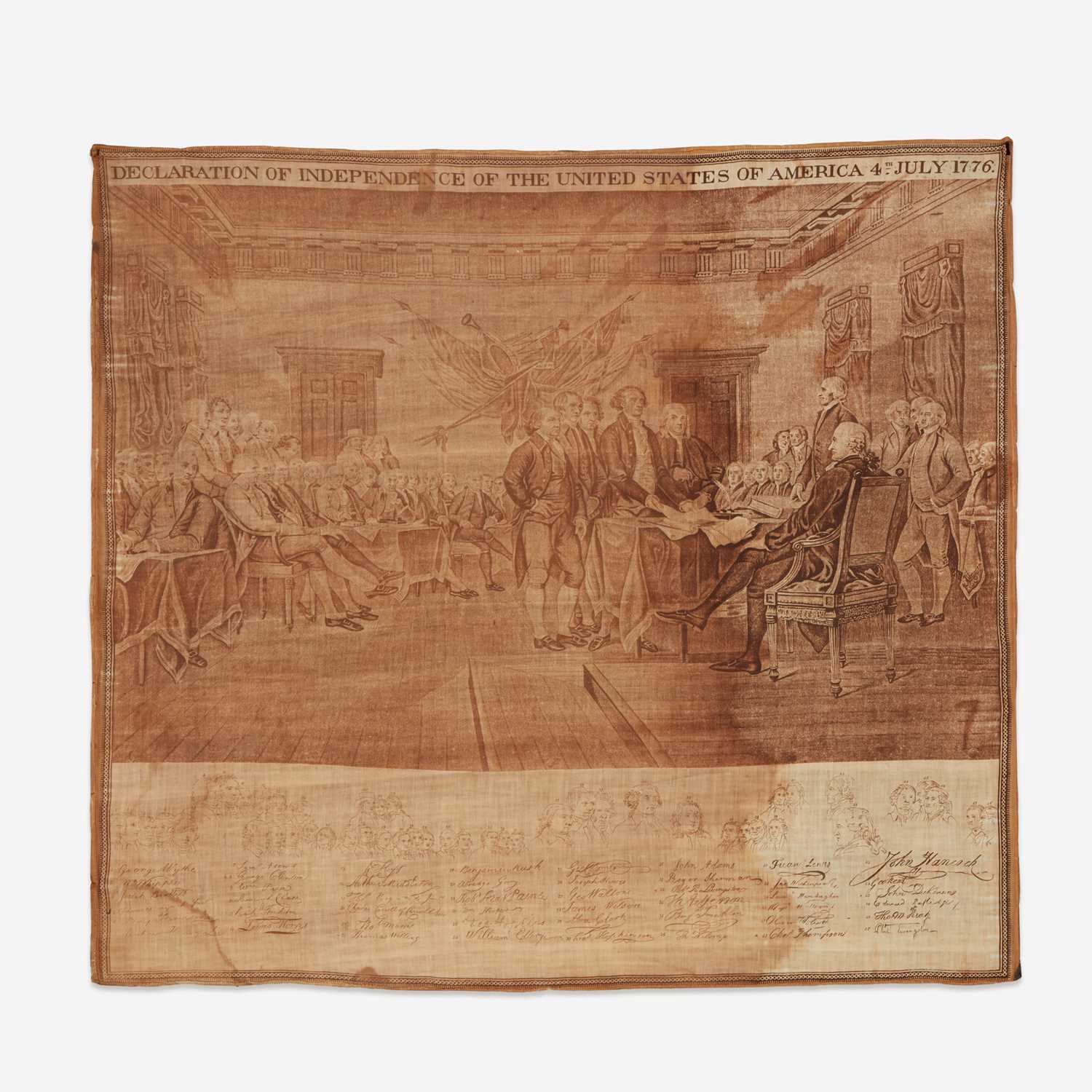

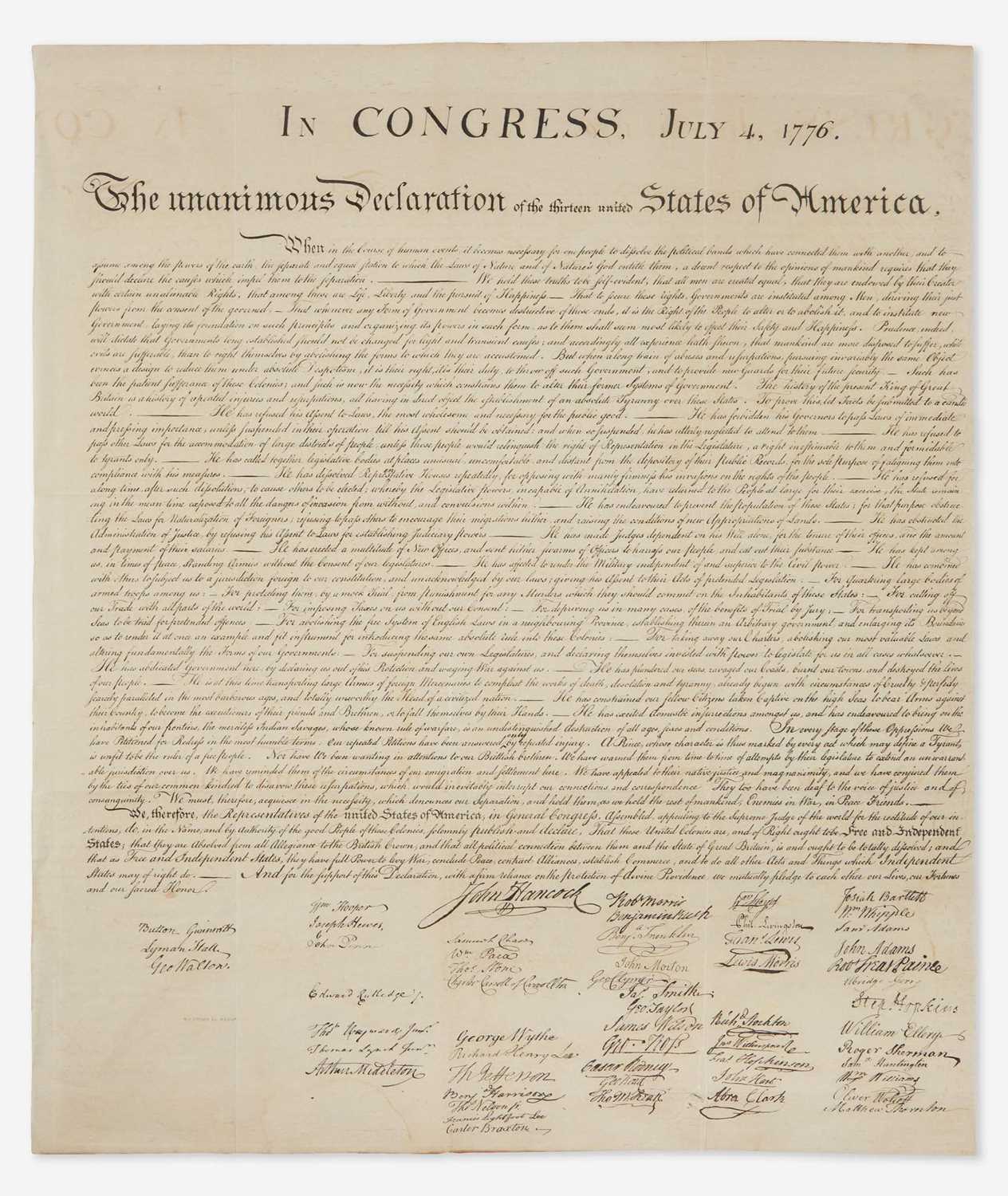
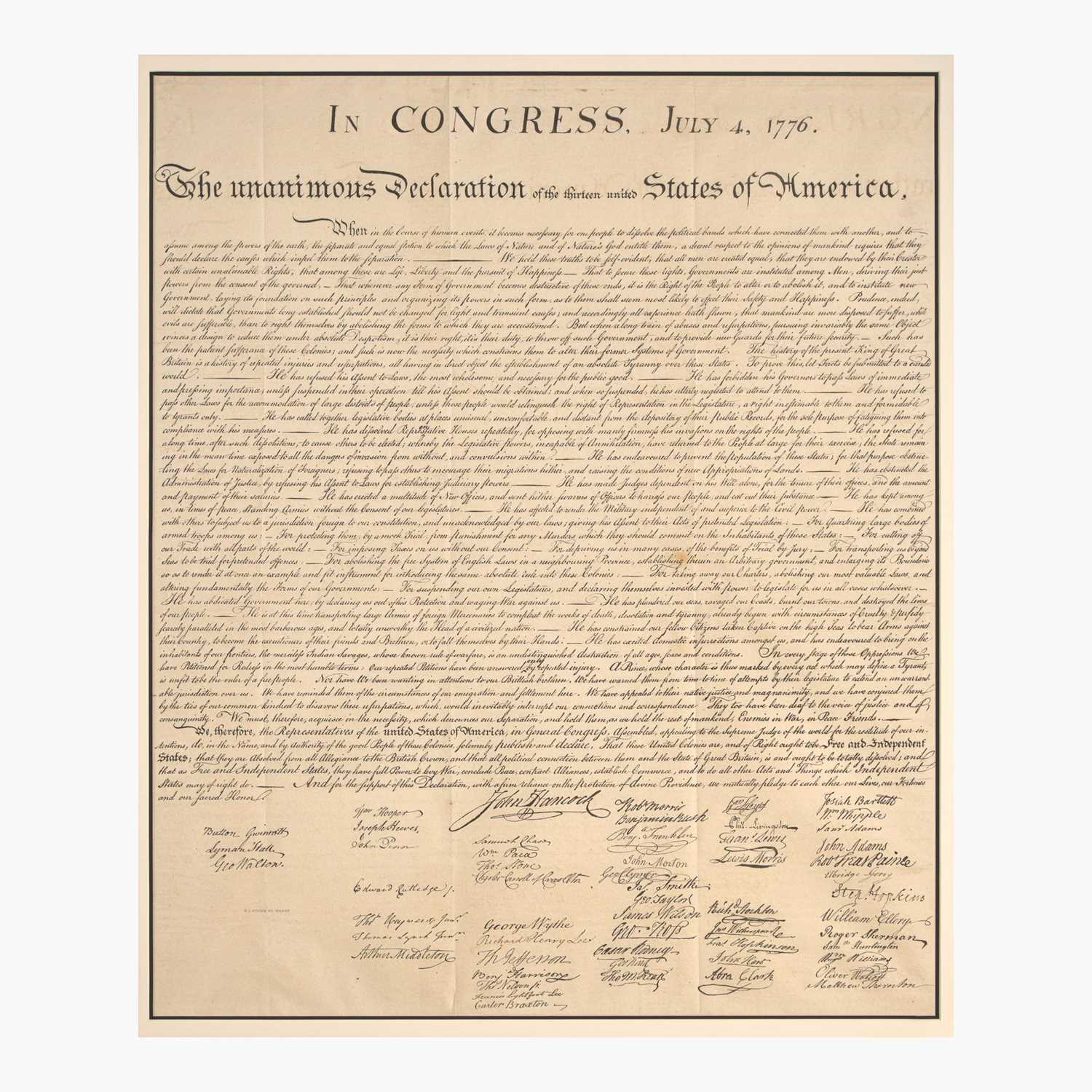



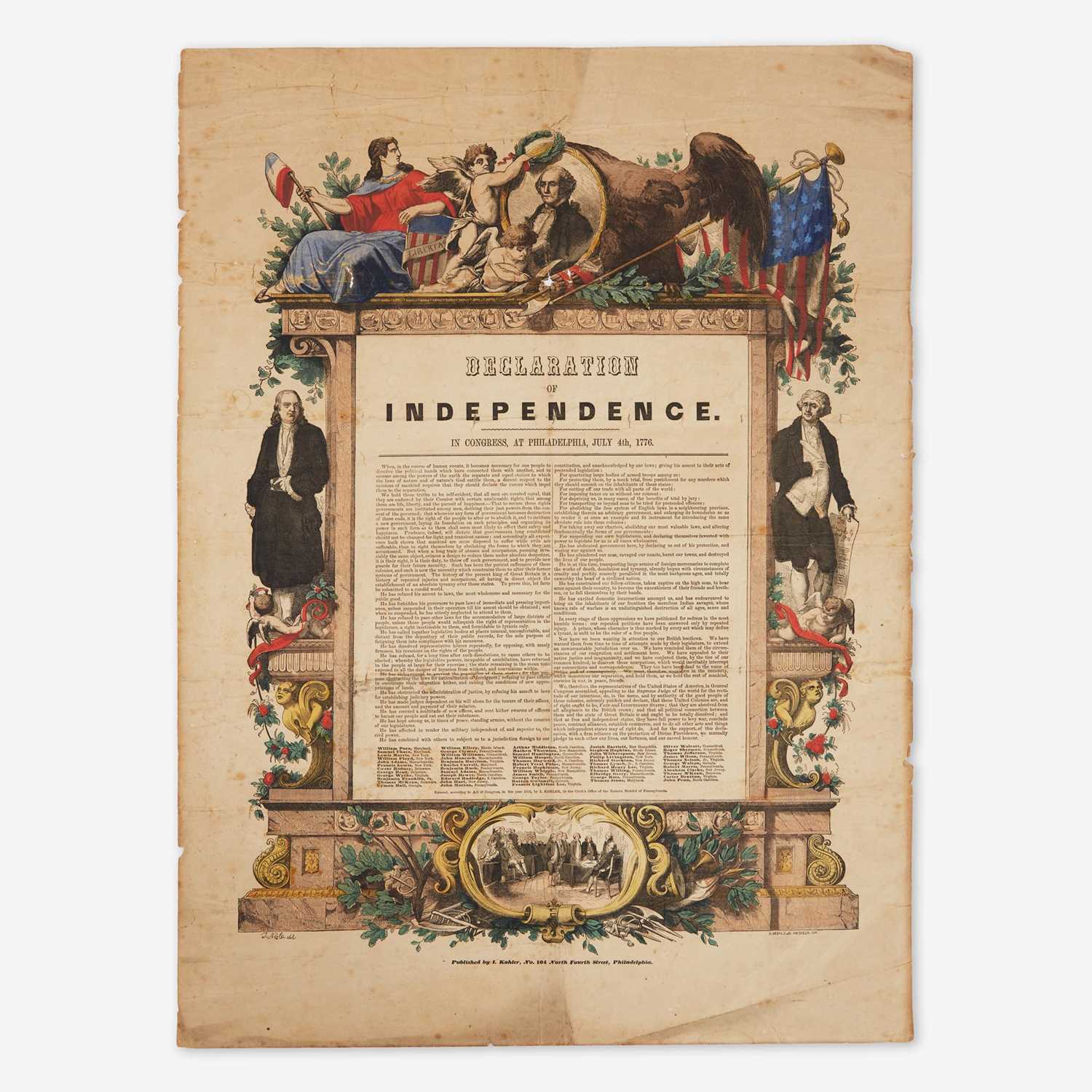

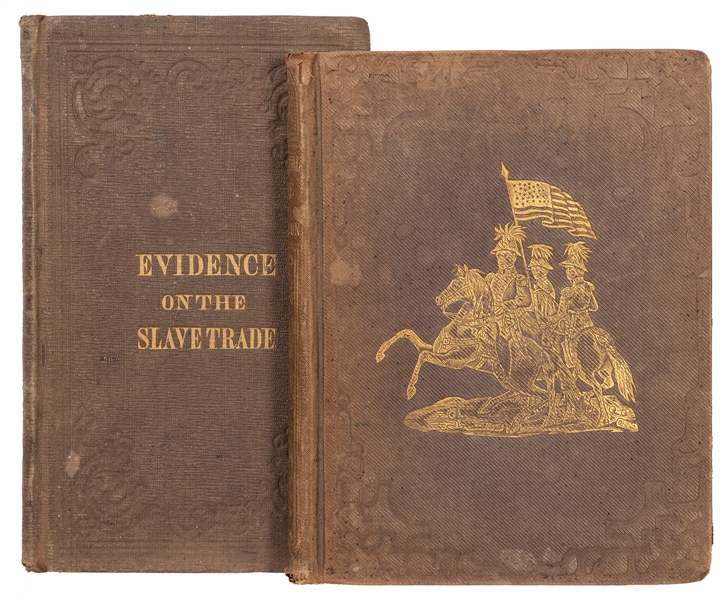

Try LotSearch and its premium features for 7 days - without any costs!
Be notified automatically about new items in upcoming auctions.
Create an alert